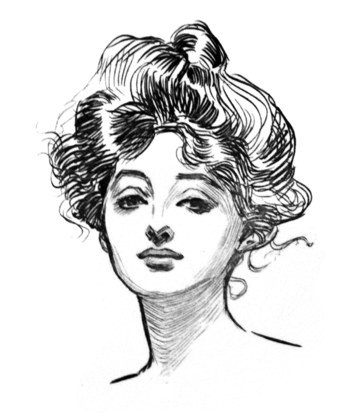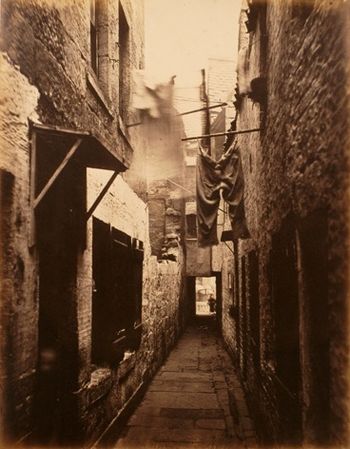
Christmas was generally a family feast in well to do households in the early 19th century household. if their Church affiliaton approved.
Source: Public Domain by Charles Green
The Not So Deep Roots of Christmas Present
The modern holiday of Christmas the modern holiday of Christmas as celebrated in the Western world, has its roots in the Victorian era. Both the he British and American public; took traditions from other northern European cultures and created the modern Christmas. This is a look at some of the development of these new holiday traditions.
Oh Christmas Tree!
The Germans were responsible for giving us the Christmas tree. Many pagan civilizations have used evergreens as a symbol of life during the dead months of winter. We have the Royal family of Queen Victoria to thank for making Christmas trees wildly popular in the US and Britain. Prince Albert in 1841 introduced the idea of a Christmas tree or Tannenbaum. In 1850 an etching of a Christmas tree at Windsor Castle was published. every well to do Victorian home decided that they too should have a Christmas tree. A tradition kept by German immigrants in the past, the Christmas tree soon was fashionable in America too. In America soon, it was popular to decorate your tree with handmade cornucopias filled with nuts, dried fruits, and candies.

Source: Publcic Domain
In 1870 in America and Britain Christmas trees were so popular; that commercial ornaments were first made. These included molded wax figures of angels, gold paper, and balls decorated with powdered glass Americans further commercialized the new holiday, by taking the tradition of homemade family gift exchange to a new level. Nn the 1880s Macy’s department store started to feature Christmas windows with toys from around the world.. They enticed shoppers into the store, with indows that featured whimsical mechanical decorations.

Victorian protrayal of colonial carolers who just happen to have printed sheet music.
Source: Public Domaint
Now We Can All Sing and Play Jingle Bells
Caroling was originally a way for clever entrepreneurs to take advantage of the presence of pianos in well-to-do Victorian house households.Carolers performed in groups of three. A caroler might play violin, while another sang.A third would sell the sheet music to the popular holiday tune.. Carolers with less commercial goals might sing for neighbors in hopes of being invited in for hot cider and holiday sweets.

Source: Christmas Card 1885
The First Hallmark Moments
Christmas letters to friends and family, where the norm for holiday communication in most Victorian households. Soon the idea of sending Christmas greetings on printed cards are became popular. Early Christmas cards depicted acts of charitable giving, and family celebrations. Many cards tried to portray Christmas as a long held and old fashioned holiday
This was all part of the marketing of a new holiday, that required consumers to purchase ornaments, store-bought gifts, and of course Christmas cards. It became increasingly popular, to focus on children . This was the reason the Victorians could really take to the holiday. The concept of a happy and somewhat carefree childhood was a growing reality for the middle class in many countries. This was a concept that was non exsistence a few generations before. Children were just adult capable of doing less productive work.
Taking the cue from many northern Europeans, ideas about elves bringing Christmas goodies to children, the tradition of Father Christmas and Santa Claus became wildly popular. Toy makers everywhere knew they would soon have an outlet, by which to guilt parents into purchasing factory produced toys, instead of the handmade standbys.

Santa was not always pictured in red and white until Coke Cola advertising made the red and white Santa clothing standard.
Source: Public Domain
Was Christ Ever The Reason for the Season!
Americans on the whole had had a historic love-hate relationship with Christmas. Many Protestant Americans considered the pagan roots of many of the trappings of Christmas, and rejected it as a proper Christian holiday.-Christmas in the New England colonies was actually being banned. Christmas in the Cavalier colonies was associated with body drunkenness and a work stoppage. Churches struggled to keep the religious and moral significance of the holiday. Charles Dickens, story the Christmas Carol helped reestablish the myth of Christmas being a time of family emphasis and helping. Soon Christmas was being this started nostalgically remembered as a time for family gathering and community concern for the hungry. While, there was not an established tradition of this, churches could encourage the celebration of Christmas with of some moral underpinning.
Attempts to put the Christ back in our modern Christians Christmas are based on the false notion that there was a time when all the trappings of the holidays, had more spiritual meaning. Since most of the popular traditions of Christmas developed from pagan roots, this isan impossibility. Victorian myths of magical Christmas charity overcoming the Scrooges of the world is not a bad idea . It allows all people to enjoy and give during this fairly new holiday season. A true old-fashioned Christmas, it might just have included a day of work followed by a Sunday sermon, on the starkness of Christ birth in a manger. We can all be glad that the Victorians claimed Christmas as a fun children’s holiday that reminds adults of the joy of childhood.
Make Your Own Victorian Ornaments

By the early 20th century children and toys were the main focus of the holiday.

A couple could only kiss if there was berries on the mistletoe,
Source: Public Domain
The Greening of Christmas: Making Our Pagen Ancestors Proud!
Ivy greenery, mistletoe, and holly all have their roots in pagan practices honoring the winter solstice. The Victorians wanting Christmas, to be a special time even for young adults, made up the concept of kissing under the mistletoe. If a supposedly, unlucky couple found themselves under the mistletoe, powers that be insisted they kiss. The number of couples who could kiss under the mistletoe was determined by the number of berries on the mistletoe. One kiss and one berryremoved. No more berries, then there were no more kissing games. I am sure most households, tried to have mistletoe with many berries.


















